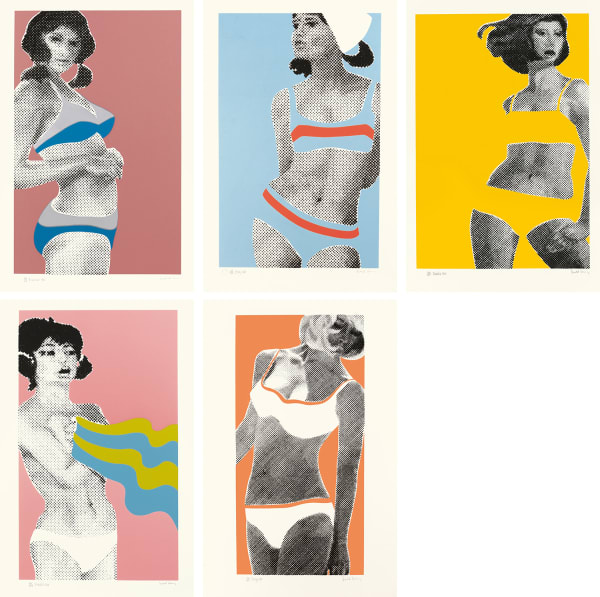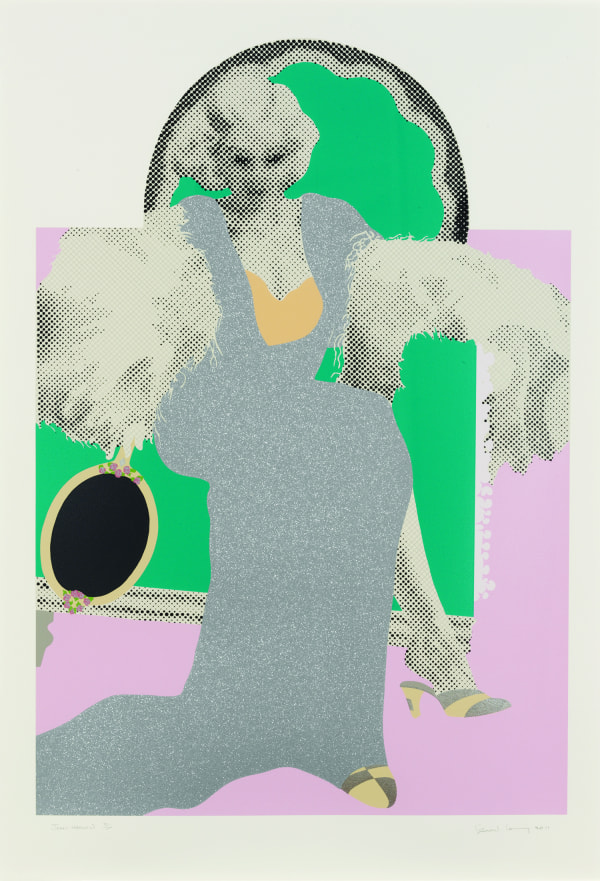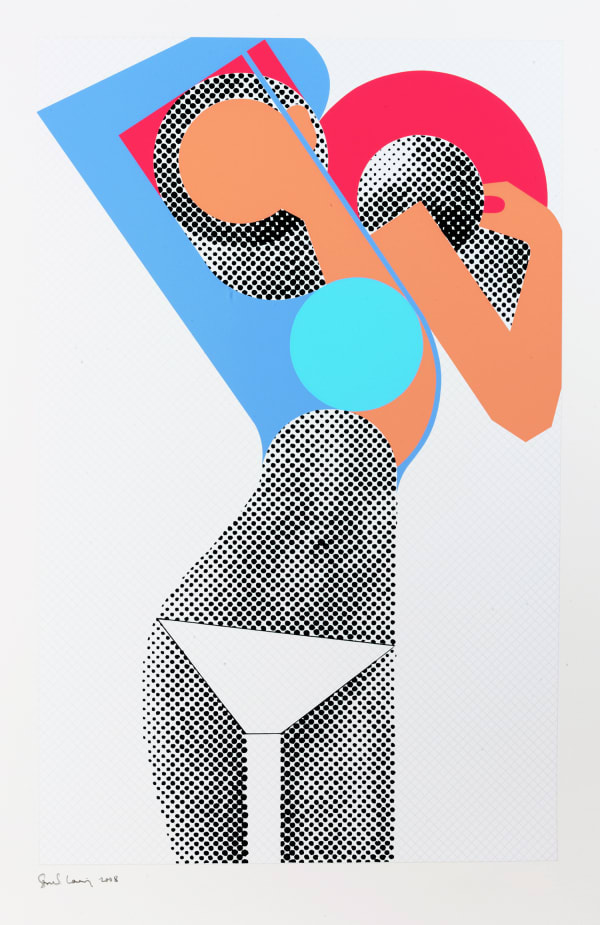Gerald Laing
-
-
 Gerald LaingBaby Baby Wild Things, 1968Each sheet signed in pencil and numbered from the edition of 200. Published by the artist with his blind stamp. With the title page and contained in their original pink velvet wrappers designed by the artist.89 x 58.5 cm (35.04 x 23.03 in)
Gerald LaingBaby Baby Wild Things, 1968Each sheet signed in pencil and numbered from the edition of 200. Published by the artist with his blind stamp. With the title page and contained in their original pink velvet wrappers designed by the artist.89 x 58.5 cm (35.04 x 23.03 in) -
 Gerald LaingBrigitte Bardot, 1968Screenprint in colours.
Gerald LaingBrigitte Bardot, 1968Screenprint in colours.
Signed in pencil and numbered from the edition of 200.58.5 x 89 cm (23 1/8 x 35 1/8 in)
-
-
-
 Gerald LaingJean Harlow, 2011Screenprint in colours.
Gerald LaingJean Harlow, 2011Screenprint in colours.
Signed in pencil and numbered from the edition of 200.121 x 86 cm (47.64 x 33.86 in) -
 Gerald LaingKate Moss, 2007Screenprint in colours.
Gerald LaingKate Moss, 2007Screenprint in colours.
Signed in pencil and numbered from the edition of 90.98.6 x 65.5 cm (38.82 x 25.79 in) -
 Gerald LaingDomestic Perspective, 2009Screenprint in colours.
Gerald LaingDomestic Perspective, 2009Screenprint in colours.
Signed in pencil and numbered from the edition of 90.
Printed by Artizan Editions, Hove.
Published by the artist.128 x 68 cm (50 3/8 x 26 3/4 in)
-
-
-
 Gerald LaingGethsemane, 2008Screenprint in colours with hand-applied silver foil blocking.
Gerald LaingGethsemane, 2008Screenprint in colours with hand-applied silver foil blocking.
Signed in pencil and numbered from the edition of 90.
Printed by Artizan Editions, Hove.
Published by the artist.96.5 x 71 cm (38 x 28 in) -
 Gerald LaingVB II, 2008Screenprint in colours.
Gerald LaingVB II, 2008Screenprint in colours.
Signed in pencil and numbered from the edition of 90.72 x 58.3 cm (28.35 x 22.95 in)
-
 Gerald LaingBelshazzar's Feast, 2010Screenprint in colours.
Gerald LaingBelshazzar's Feast, 2010Screenprint in colours.
Signed in pencil and numbered from the edition of 90.
Printed by Artizan Editions, Hove.
Published by the artist.85.5 x 122 cm (33 5/8 x 48 1/8 in) -
 Gerald LaingLincoln Convertible, 1963-2007Screenprint in colours with silver leaf.
Gerald LaingLincoln Convertible, 1963-2007Screenprint in colours with silver leaf.
Signed in pencil and numbered from the edition of 60.
Printed on heavy wove paper by Advanced Graphics, London.
Published by Sims Reed Gallery, London.110 x 150 cm (43 1/4 x 59 1/8 in)
-
-
-
Biography
As part of the original wave of Pop artists, Gerald Laing drew much of his inspiration from images found in the mass-produced printed media that inundated post-war America. Screenprinting remained an important part of Laing’s work throughout his career and from the prints he made during the 1960s came many of his most recognisable images-bikini girls, hot-rods and skydivers – characterised by their bold, flat planes of colour floating on areas of enlarged, half-toned dot patterns.
Born in Newcastle-upon-Tyne in 1936, Gerald Laing emerged on the British Pop Art scene in 1962, two years into his arts education at Saint Martin's School of Art. In 1963, his painting Brigitte Bardot (1963) was included in Young Contemporaries 63, an exhibition at the Royal Society of British Artists' Galleries. Shortly afterwards, he visited the United States, where he met Andy Warhol, James Rosenquist, and Roy Lichtenstein, and spent a summer working for Robert Indiana. Just one year later, he moved to New York, having received an offer for representation from Richard Feigen Gallery, and he aligned himself with the American Pop Art movement. In 1965, his practice moved towards sculpture and away from abstraction. By 1973, Laing had become one of the country’s leading figurative sculptors.
In 1993 the Fruitmarket Gallery in Edinburgh staged a retrospective of his work to date. In the early twenty-first century, Laing made a series of anti-war paintings, based primarily on photographs from the atrocities at Abu Ghraib. These paintings marked the beginning of his return to Pop Art. They were followed by a series of paintings of Amy Winehouse and the iconic print of Kate Moss, evoking his characteristic simplification of form.
Since Laing's passing in 2011, his works have been included in nearly every major survey of British Pop Art. His work is exhibited in public and private collections worldwide, including at the Tate, the V&A, the National Portrait Gallery and the National Gallery in London; and in the Museum of Modern Art and the Whitney Museum, New York, and the Smithsonian Institution in Washington, DC.
-
Exhibitions












